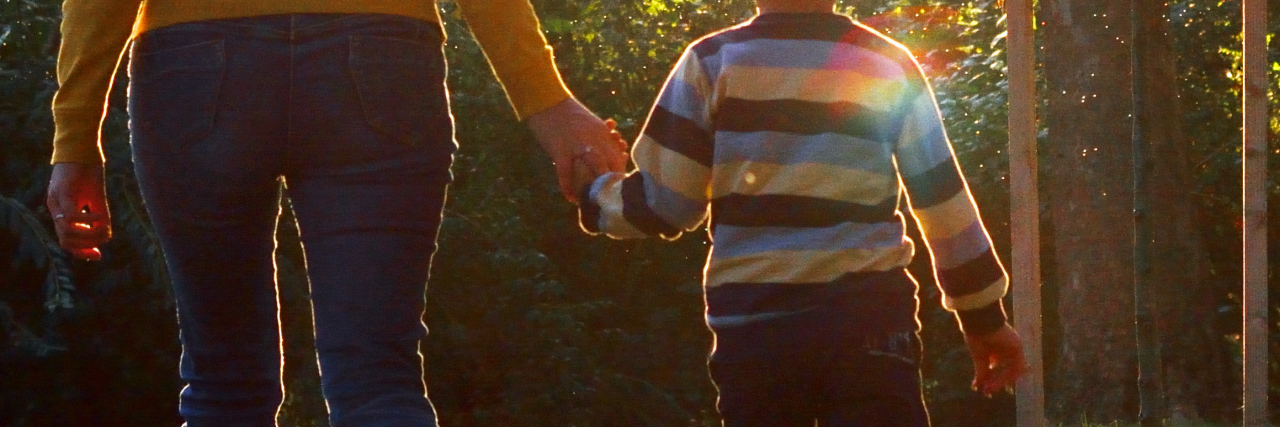Why I Can Hope for My Child's Treatment After Watching 'Extraordinary Measures'
I recently watched the movie “Extraordinary Measures,” which is based on a true story about a family desperately searching for a cure for their children’s rare disease. I was riveted by how closely the plot mirrored my experience as a parent of a child with a rare disease. Although the entire movie resonated with me, one scene clearly illuminated a moment that I have not yet allowed myself to envision: the moment they know the treatment is working.
My son was diagnosed with Snyder-Robinson syndrome (SRS) when he was 5.5 years old, in the spring of 2013. Upon his diagnosis, his geneticist handed us a short summary of SRS. The small bit of information we received that day somewhat calmed my fears about our son’s prognosis because we were familiar with the disease as it presented in him. We already knew he had global developmental delays, difficulty walking and talking, seizures, and a few other medical issues. Although we did not know about his severe osteoporosis, our son had already broken his feet, his arm and his skull, so it wasn’t too surprising. What was absolutely shocking, however, was that at the time of his diagnosis there were only 11 other people in the world who had been diagnosed with SRS.

We got home from that appointment and immediately began to research SRS. To our surprise, we found several medical journal articles on SRS and we read every one. We quickly learned that there were a few researchers interested in SRS and that they were in contact with the other families across the world. That summer, we were able to visit some of those doctors and researchers, and to connect with the other two families diagnosed with SRS in the US.
Within a year, the parents of six boys diagnosed with SRS formed the Snyder-Robinson Foundation (SRF). Our mission was to advance medical and scientific research of SRS. Three years later, the SRF has helped to fund four SRS research grants and a pre-doctoral fellowship and we’ve launched a natural history study (NHS). The SRF also was able to, through its website and social media, bring people with SRS together from all over the world. There are now approximately 50 people diagnosed with SRS in over 16 countries.
Initially, I failed to grasp that my son’s life expectancy may be different than anyone else’s. With so few people ever to be diagnosed, and only a handful ever followed or studied, a prognosis for SRS was impossible. I am slowly beginning to understand that my son’s challenges in life are enormous — he has a degenerative disease which is not well understood and for which no treatment or cure currently exists. I witness the battles most of the children wage with SRS, daily sometimes, to stay alive. I’ve seen the unfathomable heartbreak when they lose their battle.
Like the disease in “Extraordinary Measures,” SRS is an ultra-rare monogenetic disease. Both diseases are caused by a mutation in a gene, albeit a different one, that results in the failure to produce a critical enzyme, leading to multi-systemic cellular degeneration. A key difference is that, unlike Pompe disease, SRS has no clearly delineated prognosis. However, current SRS research in fruit fly and mouse models indicates that sudden death occurs frequently and inexplicably. As I began to absorb this new information, I watched “Extraordinary Measures.”
I found so many scenes in the movie fascinating. The family upends their lives to pursue a cure for their children, who were both nearing the end of their shortened lifespans. Their urgency was motivated by the lethal disease, with little time to spare. As I witnessed the steps necessary to develop a treatment for Pompe disease, I was in awe at what a colossal undertaking finding a treatment was for the researchers and the family.
Towards the end of the movie, there is a scene in which their children receive the enzyme therapy for the first time. Watching this scene was transformative for me. I was in tears, knowing exactly how I’d feel if that were my child in the hospital bed and I realized for the first time that the treatment was working. I wept with joy for the parents and their children.
I realized that, though I’ve been working side by side with other parents of children with SRS toward our common goal of a treatment or cure, I hadn’t allowed myself to really imagine what it will be like when that day arrives. Perhaps this is because there are so many hurdles to overcome to get there. Funding research for a disease so rare is daunting, running a foundation with all-parent volunteers can feel Herculean when we are also caring for children with complex medical needs, and finding researchers can be formidable. The enormous step of developing a treatment and conducting trials still seems a far-away dream.
And yet our hope continues because, despite these challenges, we are making significant progress. We have many incredibly dedicated and brilliant researchers who are studying SRS from several angles. I can now somewhat imagine a day that we will rejoice in the fact that people with SRS will no longer struggle in the myriad of ways that I’ve seen them struggle. These beautiful, brave children, whom I have come to love like my family, and children diagnosed with SRS in the future, may actually have the chance to overcome this devastating disease. We are trying our best, and our collective effort is also extraordinary and may one day make a difference in so many lives.
For now, I have to believe we will be so fortunate. For now, I must hold onto hope.
We want to hear your story. Become a Mighty contributor here.
Getty Images photo via Shinyfamily

